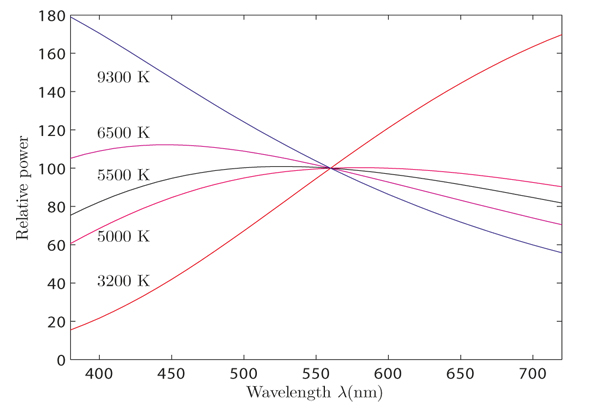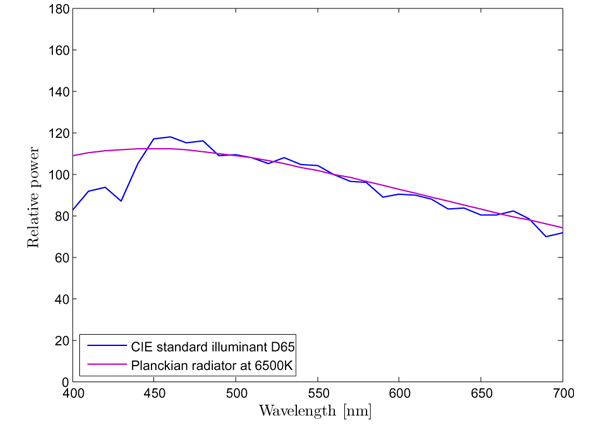One of the most important artificial light sources is a tungsten filament lamp. When heated to a certain temperature, which depends on the resistance of the filament and the applied voltage, it emits light. The color of this light is closely related to the filament’s temperature. Although a tungsten lamp is not a black-body or Planckian radiator, their emitted relative spectral power distributions (SPDs) are very identical.
With increasing temperature of the Planckian radiator, the emitted energy also increases and the peak shifts towards shorter wavelengths.

Relative spectral power distributions of Planckian radiators, normalized to equal power at 560nm
If the absolute temperature of a black body, also referred to as its color temperature, is given, it is possible to reconstruct its spectral distribution. Since Planckian emitters are rare and can only be found in specialized labs, correlated color temperature (CCT) is a useful quantity to describe an illuminant. It refers to the temperature of a black-body radiator that has nearly
the same color.

Relative spectral power distributions of a CIE standard illuminant D65 and a Planckian radiator at 6500K
CCTs can be even assigned to light sources that emit light regardless of their physical temperature, such as fluorescent lights. The color of the sky, for example, changes during the day. Correlated color temperature can be used to describe sky’s hue, although the color changes are not related to a change of the temperature, but to the Rayleigh scattering in the atmosphere.
Generally, correlated color temperature is stated in kelvins (K) or alternatively in micro-reciprocal degrees (mireds). The latter is a common unit when dealing with spectral power conversion filters. Mired is derived from kelvin and can be calculated as follows (T is the correlated color temperature in kelvins):
![]()
Correlated color temperature gives an idea of a hue of an illuminant, but since it is an approximation related to a black-body radiator, it is more appropriate to describe the illuminant's hue using CIE chromaticity coordinates, CIE XYZ tristimulus values or to use relative spectral power distributions.
bg

